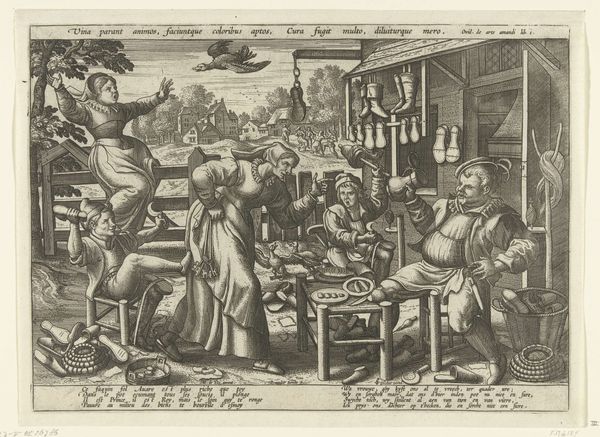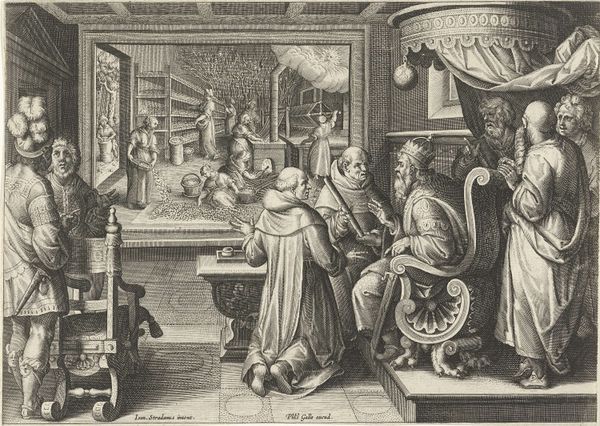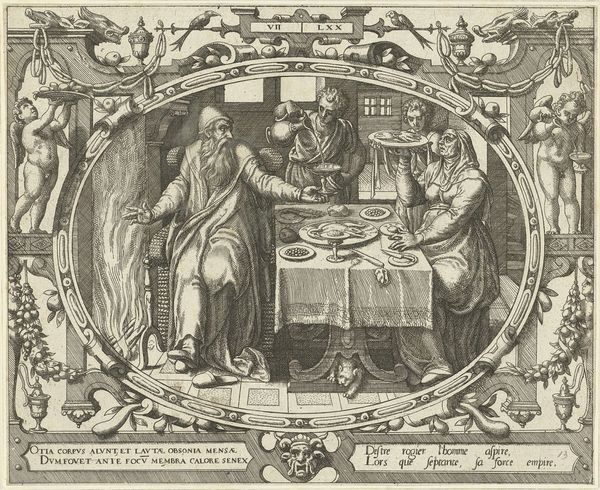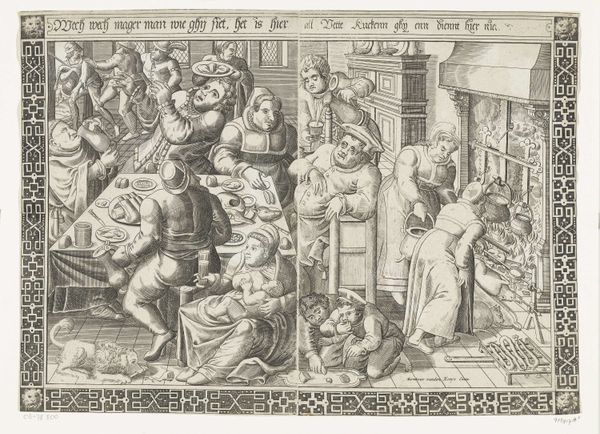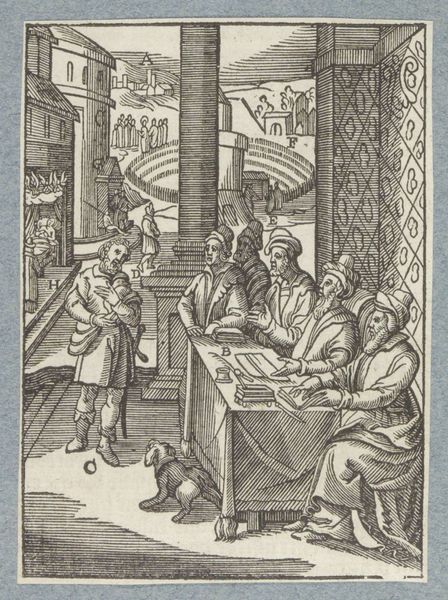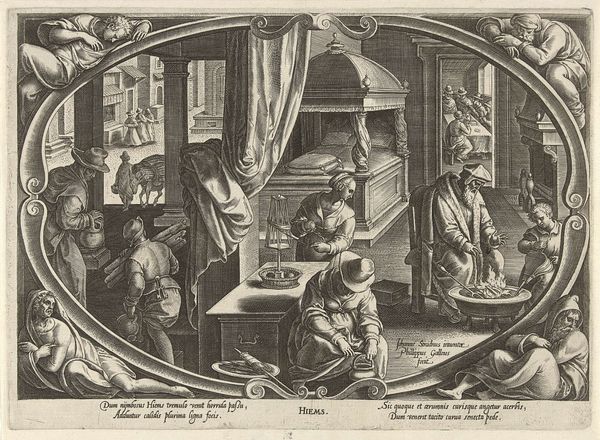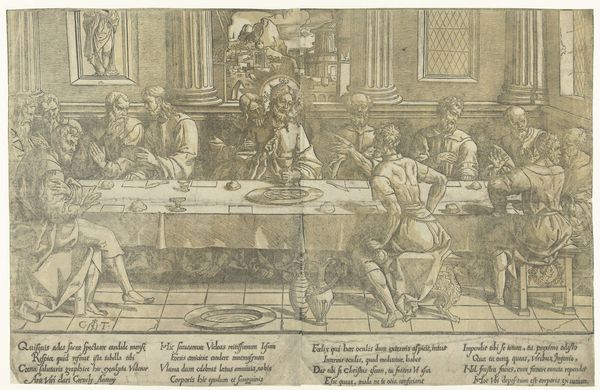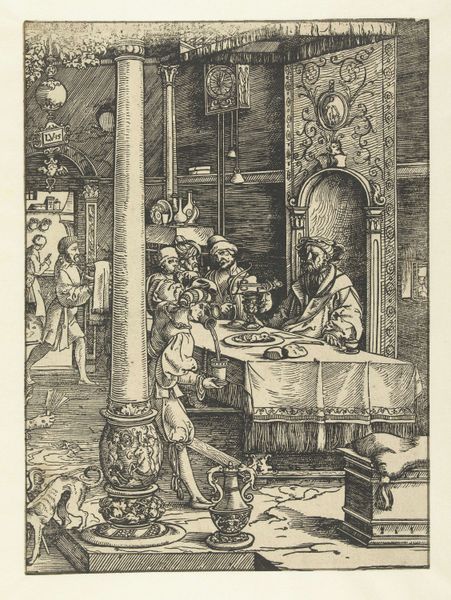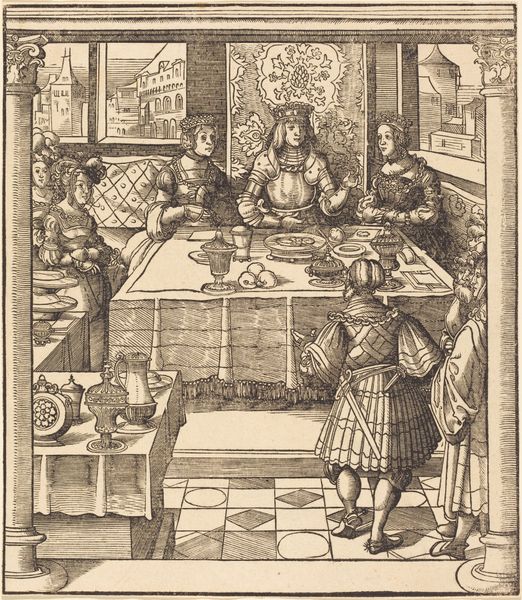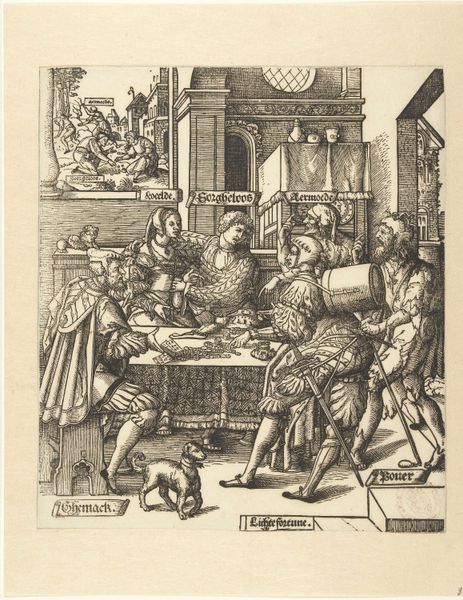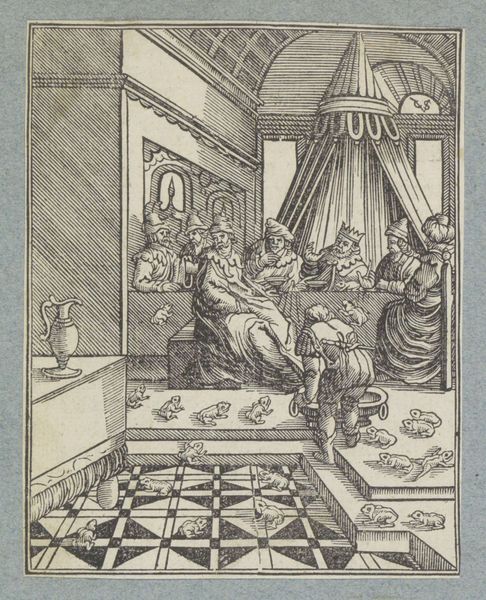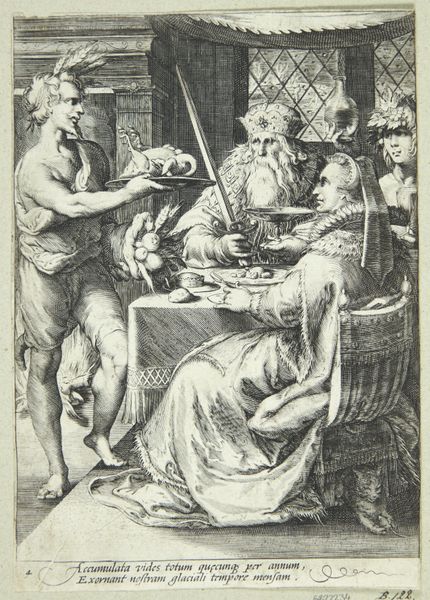
print, engraving
#
narrative-art
# print
#
pen illustration
#
old engraving style
#
figuration
#
pen-ink sketch
#
line
#
pen work
#
genre-painting
#
history-painting
#
northern-renaissance
#
engraving
Dimensions: height 343 mm, width 480 mm
Copyright: Rijks Museum: Open Domain
Curator: This engraving, created by Johannes or Lucas van Doetechum between 1587 and 1599, is titled "The Lean Kitchen," a telling name. It's part of the Rijksmuseum's collection and provides an intricate glimpse into 16th-century domestic life. Editor: My first impression is one of organized chaos, paradoxically. It's monochrome but feels incredibly rich with detail; all these tiny figures in distinctly separate groupings create an energetic composition, drawing my eye across the print again and again. Curator: The print is a Northern Renaissance genre scene, reflecting an increased interest during that period in depicting everyday life among different social classes. We can examine this kitchen and extract a lot about domestic hierarchy at the time. The composition of the "lean kitchen" reflects a strong interest in detailed interiors. Editor: Visually, there is such contrast! On one side we have laborers attending to fire, a mother, perhaps exhausted in a basket. Whereas on the other, those seated look more finely dressed and relaxed with platters. Are those vegetables they're handling? Such different treatment within the same space and bounded together in this image. There's the family and the help, or, I wonder, is it something else at play? Curator: Well, engravings of this period, circulated widely, often carried strong moralizing messages. The opulence of food consumption became something of a visual idiom to showcase. If you look closely at the printed text that surmounts this "lean kitchen", it underscores this concern, this anxiety about the role of labor, health and diet: a call to enjoy the fruits of fat or wealth. Editor: Ah, it does prompt me to think deeper about abundance versus want, health and wellbeing. But the title and visual juxtaposition makes me think there is some deeper cultural message, beyond simply highlighting material circumstances and well-being. Curator: Indeed, the van Doetechums give us plenty to unpack; in a relatively modest artwork that speaks to both the realities of 16th century social norms, but also points toward symbolic undercurrents and possible anxieties regarding material wellbeing. Editor: Absolutely. These observations add up, the symbols, the contrasts… a testament to how visual language transcends time.
Comments
No comments
Be the first to comment and join the conversation on the ultimate creative platform.
